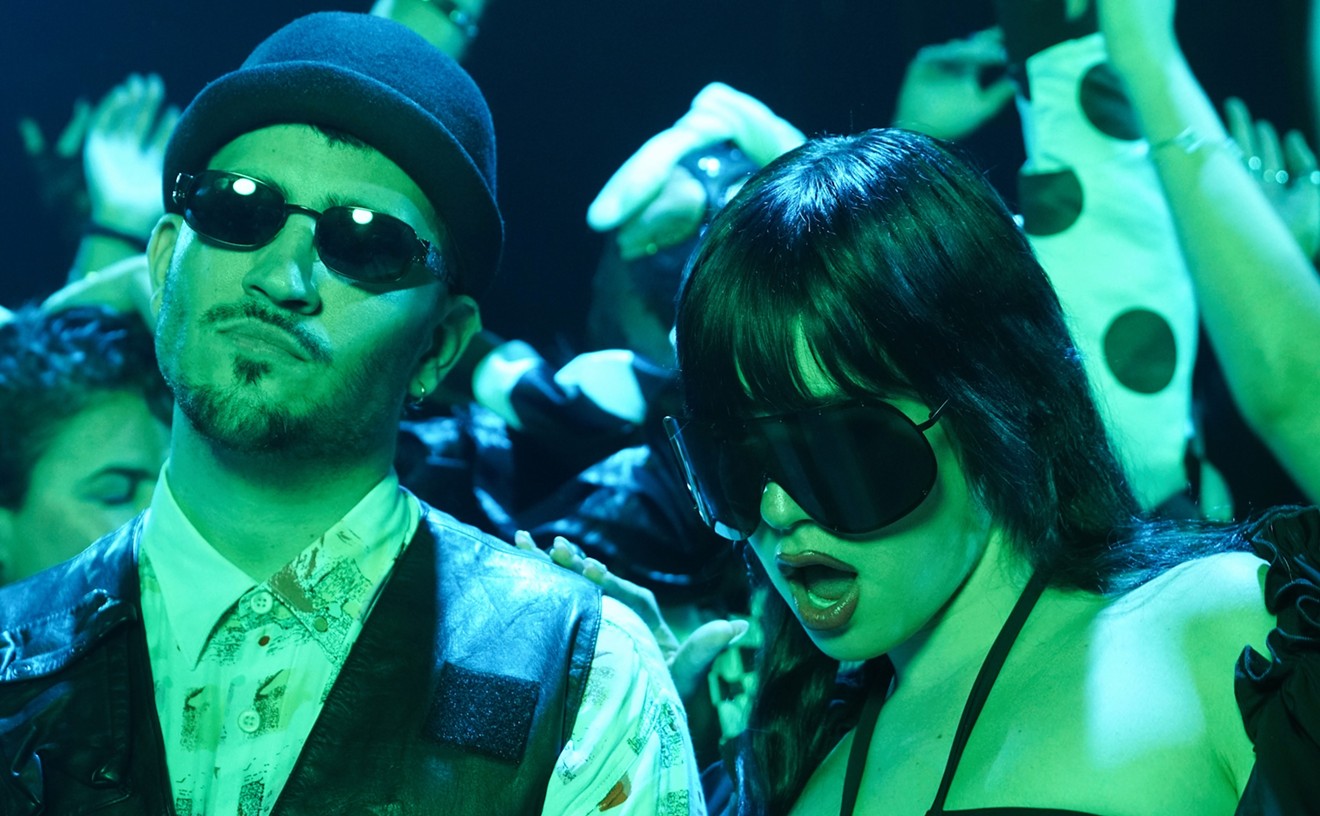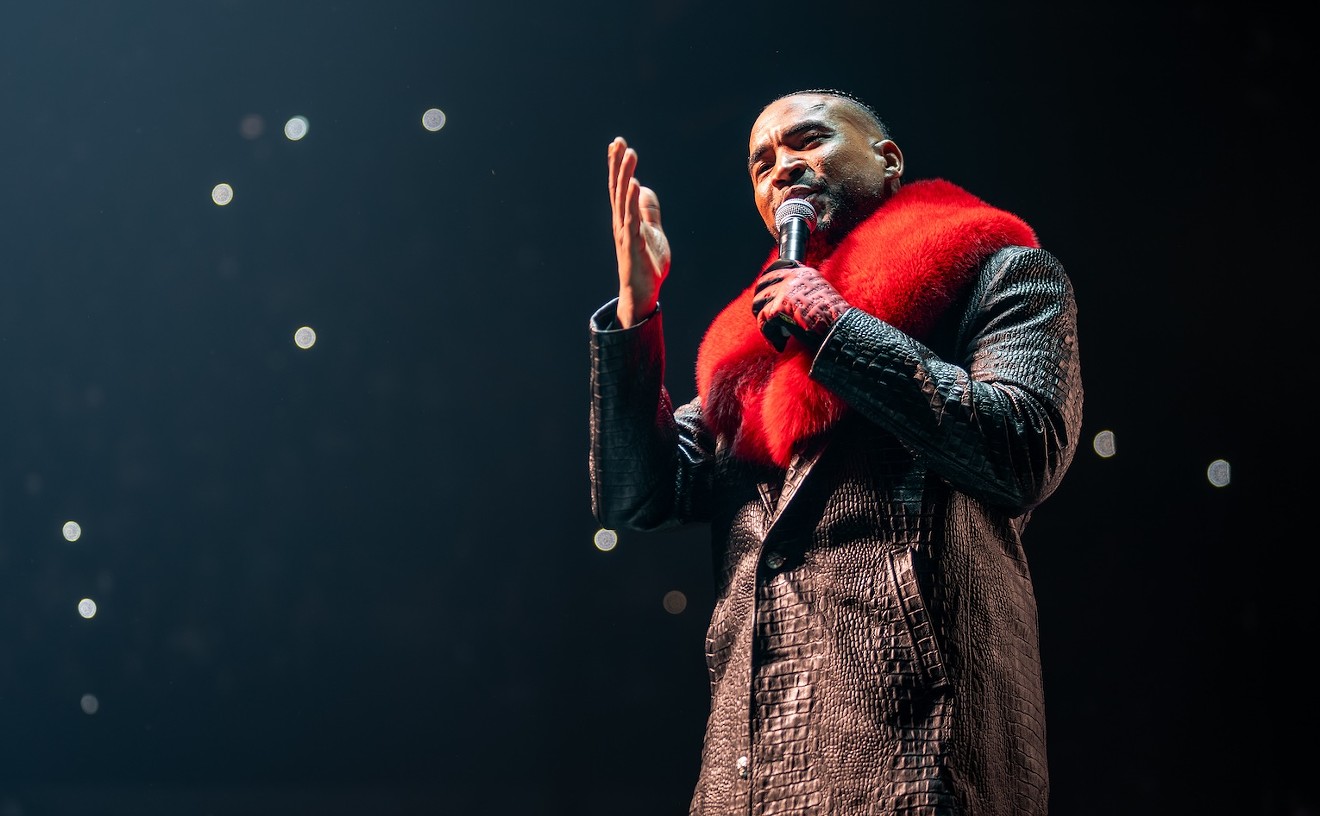That's a fitting introduction to Koerner's music, which has been trying to provide an honest answer to that existential question for four decades now; along the way Temple Beth El has hardly been his most unlikely venue. From his beginnings as one of the leading lights of the folk and blues revival of the early Sixties, on through a brace of deliciously rich acoustic-based solo efforts (such as 1987's deceptively simple Nobody Knows the Trouble I've Been or 1996's New Orleans-tinged Stargeezer), Koerner remains nothing short of an American treasure. At 62 years of age, he is still living the life of the itinerant bluesmen he idolized as a teen. Concerts are offhandedly referred to as "jobs," and while Koerner's many devout fans -- a group that includes everyone from Bonnie Raitt to Beck -- can certainly attest that his heart and soul are poured into his live work, to Koerner himself the live shows are just as valued for the opportunity they provide to hit the road. "I don't think of myself as a musician necessarily," he once explained to an incredulous fan. "I think of myself as a person who has done music. I'm a damn person trying to sort things out like other people."
Koerner first left his home in upstate New York for the University of Minnesota in 1956. His engineering studies soon took a back seat to Minneapolis's then-burgeoning folk scene, within which Koerner quickly became a central figure, at one point in a 1960 duo with Bob Dylan. Recalling that period in the bohemian university neighborhood of Dinkytown, he told a National Public Radio interviewer: "We were all goofy, you know. We were thinkers and drinkers and artists and players, and Dylan was one of us. He was another guy."
Koerner and Dylan never quite clicked as a team; more fortuitous was his trio with Dave "Snaker" Ray and Tony "Little Sun" Glover. Mixing impassioned Leadbelly covers with their own similarly styled tales of love, loss, and colorful scrapes along the way, they would record three albums for Elektra and become headlining stars at many of the major folk festivals of that era. Beyond their obvious chops (anchored by Koerner's distinctive, rhythmic guitar lines), what distinguished Koerner, Ray, and Glover from many of their painfully earnest contemporaries was their attitude. Rather than cravenly imitating the Southern bluesmen of yore, or treating their music as hallowed sociological studies, the three seemed determined to fully inhabit their songs: Imagine the Kingston Trio after a stint with the Hell's Angels.
Between bites of dinner at Hollywood's Sushi Blues Café, Koerner reflects on that time. "Back then I didn't understand anything," he says dismissively of his youth. "I was just being taken by all that stuff, trying to be a blues guy. That was what the first few records were." He adds pointedly: "I wasn't trying to copy the blues guys; I was trying to be like them. There's a difference, a real difference. You live the life and try to make up your own songs. Robbie Basho once said, 'I don't try to follow the masters; I try to ask the same questions they asked.'"
Writing in the liner notes to Red House Records' recent reissue of The Return of Koerner, Ray & Glover, the trio's third and final record together (excepting a 1996 reunion session), Glover recalled that by the album's fall 1965 issuance, "it was clear which way the wind was blowing." Dylan had gone electric while "many of the Thirties and Forties blues singers had been located and were working around at festivals and coffeehouses; you could actually go hear Son House, Skip James, Fred MacDowell, Bukka White, and Lightning Hopkins fairly regularly. It seemed that the genre of music we'd tried to turn people on to a couple of years previously was now doing real well on its own. It was hard not to wonder if there would still be a market for us, now that the originators were close at hand."
For Koerner this societal shift necessitated a personal transformation, one that went far beyond market considerations. "I finally decided I was not a blues guy," he says firmly. "How could I be? I was too young and too white, all that shit. So I took a year off and when I started playing again, I treated the subject in general as folk music. It's a new culture; it's not music being made on a back porch anymore."
Koerner began working on a set of radically different material, influenced as much by the Beatles as by roots traditions. Hooking up with Minneapolis boogie-woogie pianist Willie Murphy, the two assembled a full band. The result was 1969's Running, Jumping, Standing Still, an album revered as one of that decade's unsung classics; even at this late date it has few stylistic peers. Barrelhouse piano rave-ups, R&B stomps, fuzzed-out electric bass riffs, and an old-timey spirit somehow all cohered, tied together by Koerner's soulful voice and commanding presence. "We were all over the place," Koerner recalls with a laugh. "We sang in 5/4 time. We were having chord structures from ... hell, I don't where they were from!"
Despite its timeless character, however, Running failed to connect with a mass audience. True to form Koerner kept moving, in the subsequent years pursuing passions as disparate as filmmaking, astronomy, and vintage shipbuilding. When the fancy strikes him, and the time seems right, he heads back into the studio and cuts an album. To Koerner it's all interconnected.
"I have been a folk musician, I have been a folk astronomer, I have been a folk boatbuilder. I hope to be folk other things," he says. "The idea is that you take yourself as a person of modest talents, you become interested in something, and you throw yourself into it because it intrigues the shit out of you. Anybody could do what I did. You just have to treat it with a bit of abandon and not worry about what other people think."
"Spider" John Koerner performs with Dave "Snaker" Ray at 9:00 p.m. on Friday, January 28, at Alligator Alley, 2079 University Dr, Sunrise. Also appearing is New Orleans bluesman Mem Shannon. Tickets cost $12. For more information call 954-742-6874.










